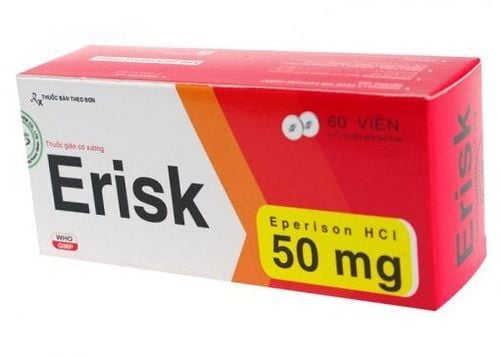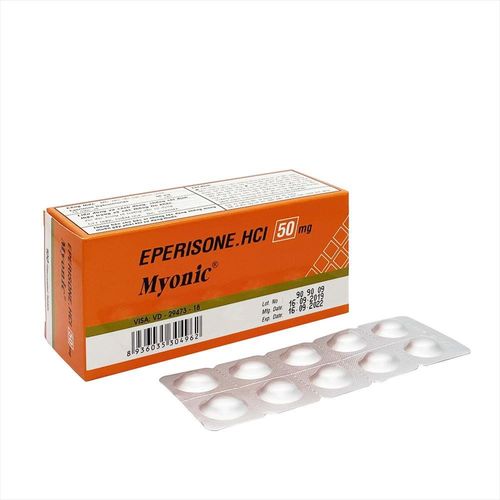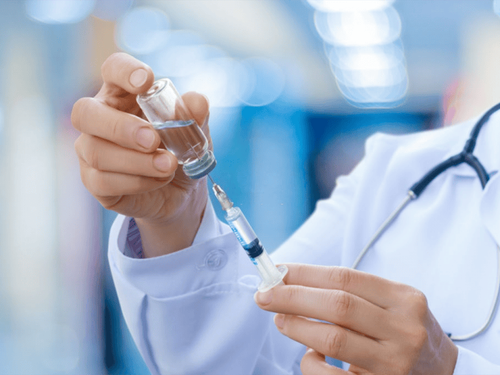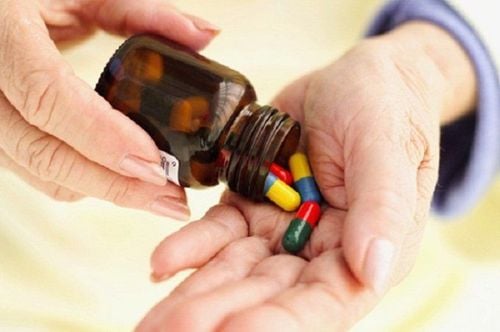This is an automatically translated article.
Secondary or secondary injuries are sequelae that occur after a certain disease. This condition seriously affects the patient's life and activities. Therefore, it is necessary to have reasonable secondary injury prevention measures and support the patient to recover as much as possible.
1. What is a secondary injury?
Secondary (or secondary) injury is a concept that refers to defects that occur after a certain disease, causing the patient to lie still for a long time, lack of care, or if cared for, do not. right way. Secondary injuries can include conditions such as muscle atrophy, contractures, stiffness, osteoporosis, infections or pressure ulcers...
Secondary injuries can occur in subjects such as: :
Children with cerebral palsy, polio fever... Elderly people with cerebrovascular accident or traumatic brain injury ...
2. How do secondary injuries affect the patient's life?
Similar to other forms of malformations, secondary injuries are contributing factors that cause patients to have certain difficulties in maintaining life functions, daily living habits and thereby limit participation in social activities. Some effects and difficulties of patients with secondary injuries include:
Stiffness and pain in the joints will limit normal movements; Limitations in daily activities, especially difficulties in self-care; Limit travel and movement; In children, secondary injuries cause many obstacles to children's learning, activities and mobility at school, making it difficult to communicate and make friends; Limit participation in household chores and activities outside the community and society; Keeping a job becomes more difficult and in turn affects income.
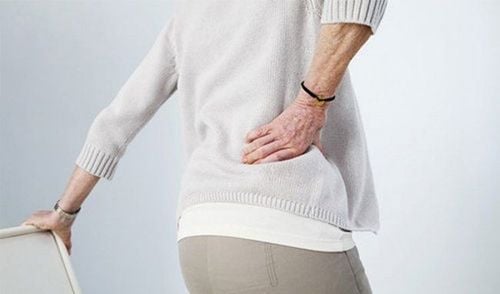
Các thương tật thứ cấp khiến cho người bệnh gặp một số khó khăn nhất định trong sinh hoạt hàng ngày
3. Causes of secondary injuries
Incorrect anatomical posture causes pain, this cause is common in patients with arthritis or trauma to the musculoskeletal system...; The state of muscle spasticity or contraction is seen in some neurological diseases such as cerebrovascular accident, spinal cord injury, cerebral palsy, polio...; Prolonged immobilization due to serious diseases or trauma such as: After fracture of the femoral neck in the elderly, myocardial infarction or coma... This cause often causes secondary injuries such as pressure ulcers , muscle cramps or stiffness; Inadequate care or due to ignorance of both medical staff, family members or the person suffering from secondary injuries.
4. What are the telltale signs of secondary injury?
To make an accurate diagnosis, we need to determine what type of secondary injury it is. Common secondary injuries include:
4.1. Muscle atrophy is defined as muscle shrinkage in volume due to prolonged immobility or damage to the nerves that supply that muscle.
How to detect: Measure the circumference of the limb, then compare the opposite limbs or most precisely, compare with the limb before immobilization; Muscle atrophy caused by prolonged immobilization can be reversed with proper training with strengthening exercises; Muscular atrophy due to nerve damage is seen in pathologies such as trauma, polyneuritis or sequelae of certain metabolic diseases (including diabetes mellitus, vitamin B deficiency). Muscle atrophy due to this cause is often more severe and less likely to recover. Treatment is with medications combined with range-of-motion exercises, muscle strengthening, and the use of assistive or orthopedic devices. 4.2. Muscle Spasticity This is when the muscles are stiff even at rest.
The way to detect is to let the patient rest, relax and then proceed to massage the muscles will feel stiffer than usual. In addition, when holding two limbs with spasticity, they will find that limb moves more difficult and slower than the opposite side; Muscle spasticity is a secondary injury seen in a number of diseases such as cerebrovascular accident, spinal palsy... Muscle spasticity restricts joint movement, if prolonged, can lead to muscle spasms and stiffness. ; Exercises to perform during spasticity include range-of-motion exercises to prevent stiffness and the use of orthotics to maintain correct anatomical posture for as long as possible. 4.3. Muscle contracture This is a condition in which the muscles and soft tissues are shortened, making the joints unable to move to their full limits.
Distinguish contracture from muscle spasticity by performing passive limb movements, joints of people with spasticity can still move to the limit and people with muscle cramps cannot, and tendons will raised, tight, stretched causing pain; Spasticity and contracture can both lead to stiffness and deformity of the joint. 4.4. Stiffness and deformity This is a common secondary injury. Normal people's joints move very easily, soft and painless. When you have arthritis or muscle cramps, the range of motion of the joints will be limited, the joints are always in a position, it is difficult to move to the full range called stiffness. Joints that are inflamed or immobile for a long time will often lead to deformity, misalignment, and failure to return to normal posture.
How to detect stiffness: The patient lies in a comfortable, relaxed position, one hand is on top of the stiff joint, one hand is at the tip of the patient's limb, then gently moves according to the joint range of motion, if stiffness and pain are present with movement, then stiffness can be determined; However, in some cases, it will be a bit difficult to distinguish whether the difficulty in joint movement is due to stiffness or muscle contraction.
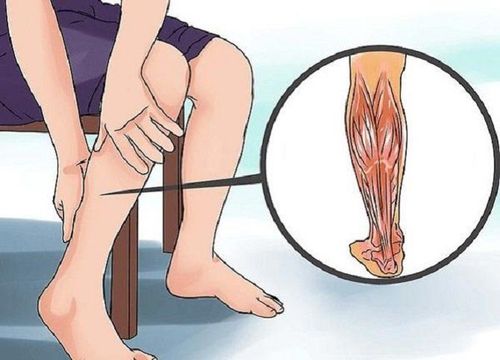
Các thương tật thứ cấp hay gặp như: Teo cơ, co cứng cơ, co rút cơ, cứng khớp,...
5. Secondary injury prevention
Measures to prevent secondary injury should be taken at an early stage, when the patient is immobile. If instructed to do range-of-motion exercises and muscle-strengthening exercises, recovery is still possible. However, when the muscle has contracted or stiffened, the degree and ability to restore the same function will be more difficult.
Medications used in secondary injuries are intended only to relieve pain or relax muscles for exercise and subsequent stretching.
Exercises: Patients need to choose and maintain passive exercises according to the appropriate range of joint motion. For example, a patient with stiff joints in the hand should choose exercises for the shoulder, elbow, wrist and hand joints.
Orthopedic equipment: After each exercise, the range of motion of the joint can be improved, the patient needs to be kept in that position for as long as possible. Therefore, if necessary, it is necessary to use orthopedic devices (such as splints) to fix the appropriate position of the joint.
Devices to maintain good posture of the limbs and trunk, which can be:
Arm bands for people with arm paralysis; Elbow brace or wrist brace used for people with forearm and elbow spasticity; Knee splints or splints below and above the knee to keep the knee and ankle joints in the correct position for patients with foot droop or knee stiffness in the flexed position; Pillows or sandbags are used in all cases to prop up the patient's limbs or joints in the necessary position. Maintaining good posture is an effective secondary injury prevention measure to limit stiffness and joint deformity, minimizing the risk of muscle contractures. Each patient will have a different deformity pattern, so a reasonable position is the opposite of the predicted deformity. Rehabilitation collaborators need to be familiar with some types of deformities in diseases such as hemiplegia, paralysis of the lower limbs due to spinal cord injury, deformity in arthritis... to guide families and patients in keeping correct posture.
Vinmec International General Hospital is one of the hospitals that not only ensures professional quality with a team of leading medical doctors, modern equipment and technology, but also stands out for its examination and consultation services. comprehensive and professional medical consultation and treatment; civilized, polite, safe and sterile medical examination and treatment space.
Please dial HOTLINE for more information or register for an appointment HERE. Download MyVinmec app to make appointments faster and to manage your bookings easily.




